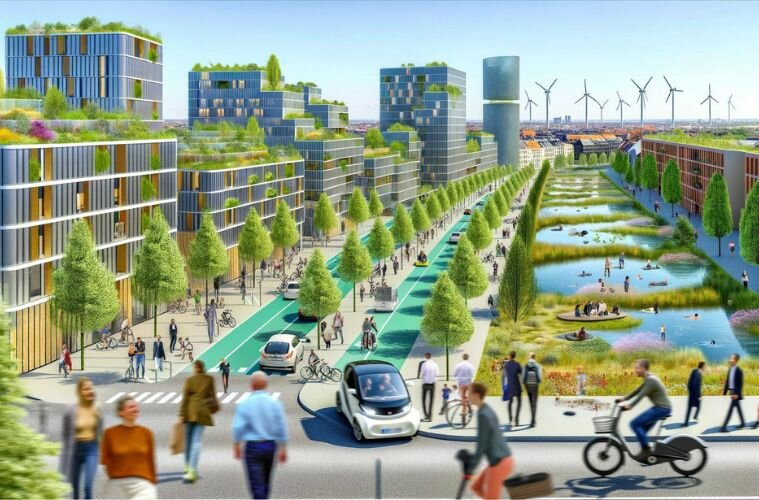Staff Writer
As Europe faces the dual challenges of economic recovery and climate resilience, infrastructure has emerged as a critical lever for addressing these issues. Investments in resilient and sustainable infrastructure not only stimulate economic growth but also safeguard against the increasing risks of extreme weather events.
The Economic Power of Infrastructure Investments
Historically, infrastructure investments have been a cornerstone of economic recovery. Large-scale projects in transportation, energy, and urban development create immediate employment opportunities and generate long-term benefits. According to the European Investment Bank (EIB), every €1 ($1.04) billion invested in infrastructure supports up to 13,000 jobs during the construction phase, with ripple effects that boost productivity and connectivity.
Moreover, infrastructure is essential for reducing vulnerabilities in climate-sensitive sectors such as agriculture, energy, and transportation. The European Extreme Events Climate Index (E3CI) highlights the rising frequency of extreme weather events—including heatwaves, floods, and windstorms—that threaten economic stability. Infrastructure investments targeting these risks are crucial for minimizing disruptions and ensuring economic continuity.
Resilient Infrastructure to Mitigate Climate Risks
Europe’s infrastructure must adapt to a changing climate. Since 1980, weather-related economic losses in Europe have exceeded €500 ($519.5) billion, according to the European Environment Agency (EEA). Resilient infrastructure can mitigate these losses by protecting assets and communities.
For instance, flood defenses and improved drainage systems are vital for safeguarding urban areas against rising water levels. Similarly, renewable energy infrastructure, such as offshore wind farms and solar power plants, reduces dependency on fossil fuels while enhancing energy security. These investments not only address immediate climate risks but also align with the European Green Deal’s target of net-zero emissions by 2050.
Sustainable Infrastructure for Green Recovery
Sustainable infrastructure goes beyond resilience by actively contributing to environmental goals. Green infrastructure, such as urban forests, green roofs, and wetlands, enhances biodiversity, reduces urban heat islands, and improves air quality. These solutions are particularly relevant in densely populated cities that face climate-related challenges.
A notable example is the EU’s Renovation Wave initiative, which focuses on retrofitting buildings to improve energy efficiency. By doubling the rate of building renovations, this initiative aims to create approximately 160,000 green jobs annually while reducing carbon emissions. Similarly, investments in sustainable transportation, such as high-speed rail and electric vehicle charging networks, demonstrate how infrastructure can drive the transition to a low-carbon economy.
Financing Infrastructure: The Role of Innovation
To meet Europe’s ambitious infrastructure goals, innovative financing mechanisms are essential. Public-private partnerships (PPPs) have proven effective in mobilizing private capital for large-scale projects. These partnerships reduce the financial burden on governments and leverage private sector expertise in project execution.
The European Commission’s InvestEU program exemplifies how public funding can catalyze private investments in sustainable infrastructure. With a budget of €26 ($27) billion, the program aims to trigger over €372 billion ($386.5) in additional investment, focusing on renewable energy, digital connectivity, and climate adaptation projects.
Addressing Geographic Disparities
Economic and climate challenges vary across Europe. Southern European nations, heavily affected by heatwaves and droughts, require investments in water management and renewable energy. Meanwhile, northern regions face risks from flooding and windstorms, necessitating robust coastal defenses and resilient energy grids. By tailoring infrastructure solutions to these geographic realities, Europe can enhance economic resilience and regional equity.

